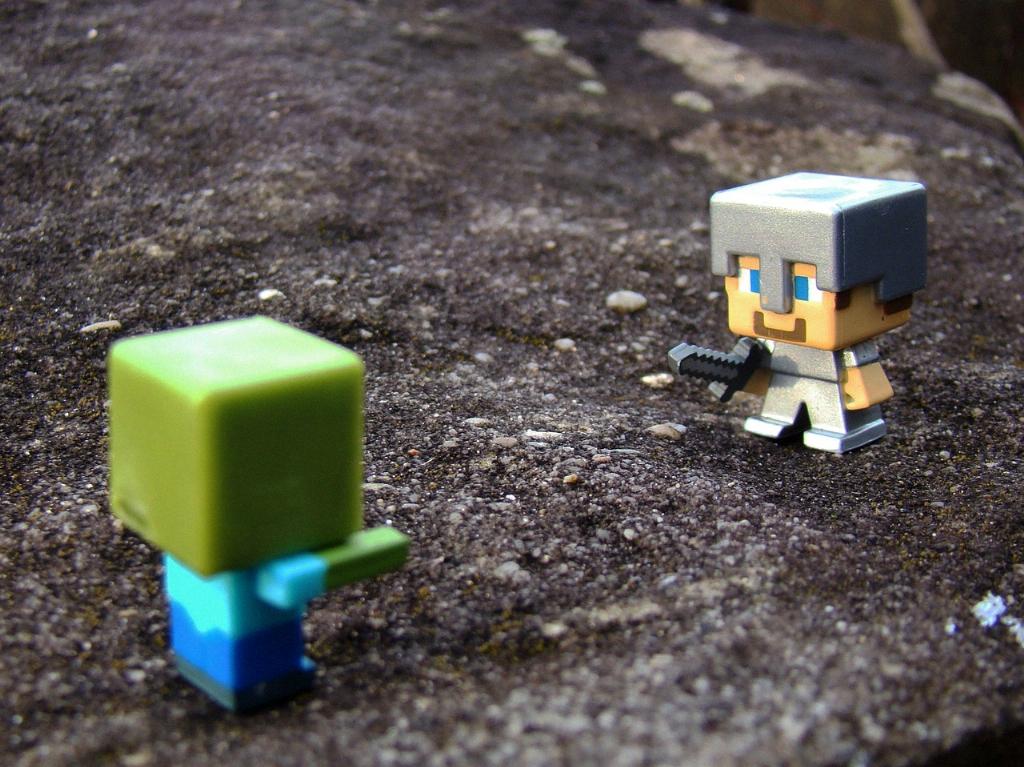Building a composter in Minecraft is a great way to recycle excess plants and organic items. To begin this project, you will need to gather the necessary materials. The key ingredient for crafting a composter is seven wooden slabs of any type. You can obtain wooden slabs by converting wooden planks into slabs at a Crafting Table. Remember, the type of wood you use will not affect the functionality of the composter, so feel free to use any wooden slabs you have available.
Crafting Your Composter
Once you have collected the seven wooden slabs, it’s time to head to the Crafting Table to start building your composter. Arrange the wooden slabs in a U shape on the Crafting Table grid. Make sure to place three slabs in the top row, one in the middle row, and three in the bottom row. This formation will create the structure of the composter, which is essential for converting organic items into bone meal.
Understanding The Purpose Of A Composter
Composters serve a vital function in Minecraft by allowing players to recycle organic materials into a valuable resource known as bone meal. You can fill the composter with items such as seeds, saplings, leaves, or any other plant-based material to create bone meal, which can be used as a fertilizer for crops. Building a composter is not only environmentally friendly but also essential for sustainable farming practices in the game.
Utilizing Bone Meal For Farming
After crafting a composter and producing bone meal, you can use this valuable resource to accelerate the growth of your crops. Applying bone meal to crops such as wheat, carrots, potatoes, and other plants will speed up their growth process, allowing you to harvest crops more efficiently. This can be particularly useful when you need a quick harvest or want to maximize the yield of your farm.
Building Multiple Composters
As you advance in Minecraft and expand your farming operations, consider building multiple composters to increase your bone meal production. Having several composters running simultaneously will allow you to process a larger quantity of organic materials efficiently. This strategic approach can streamline your farming workflow and ensure a steady supply of bone meal for your agricultural needs.
Experimenting With Different Materials
While wooden slabs are the primary ingredient for crafting a composter, you can experiment with different materials to customize the aesthetic of your composting area. Consider using slabs made from various types of wood to create a visually appealing composting station. Mixing and matching different wood types can add a unique touch to your farm and showcase your creativity in the game.
Placing Your Composter
Once you have crafted your composter, it’s time to decide where to place it in your Minecraft world. Choose a convenient location near your farm or gardening area to facilitate easy access to the composter. Placing the composter in close proximity to your crops will simplify the process of fertilizing them with bone meal and ensure that you can efficiently manage your agricultural tasks.
Automating The Composting Process
For players looking to streamline their farming operations, consider automating the composting process by connecting the composter to a hopper system. By integrating hoppers into your composting setup, you can automatically transfer organic items into the composter and collect the resulting bone meal without manual intervention. This automation can save you time and effort while maximizing your farm’s productivity.
Decorating Your Composting Area
Enhance the visual appeal of your farming area by decorating the surroundings of your composter. Add decorative elements such as flowers, fences, or other aesthetic features to create a charming composting station. Personalizing the environment around your composters can make your farm more inviting and showcase your attention to detail in designing a functional and beautiful agricultural space.
Upgrading Your Composting Setup
As you progress in Minecraft and expand your farming endeavors, consider upgrading your composting setup to increase efficiency and production capacity. You can build larger composting facilities, incorporate automated redstone mechanisms, or implement advanced farming techniques to optimize your bone meal production. By continuously refining your composting system, you can elevate your farming operations to new heights and achieve greater success in the game.
Exploring Sustainable Farming Practices
Building a composter in Minecraft is not only a practical way to recycle organic materials but also an opportunity to explore sustainable farming practices within the game. By incorporating composting into your farming routine, you can nurture a more eco-friendly and resource-efficient approach to agriculture. Embrace the concept of sustainability in Minecraft by utilizing composters as a cornerstone of your farming strategy and promoting environmental stewardship in your virtual world.

Conclusion: Embracing Composting In Minecraft
In conclusion, constructing a composter in Minecraft offers a range of benefits for players interested in efficient farming, resource recycling, and environmental conservation. By following the simple crafting recipe of seven wooden slabs, you can create a composter that transforms organic items into valuable bone meal. Explore the possibilities of composting in Minecraft, experiment with different materials and designs, and elevate your farming game with sustainable practices that support growth and productivity in your virtual world.
